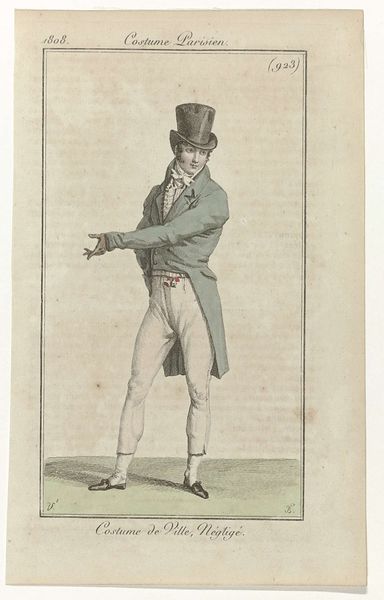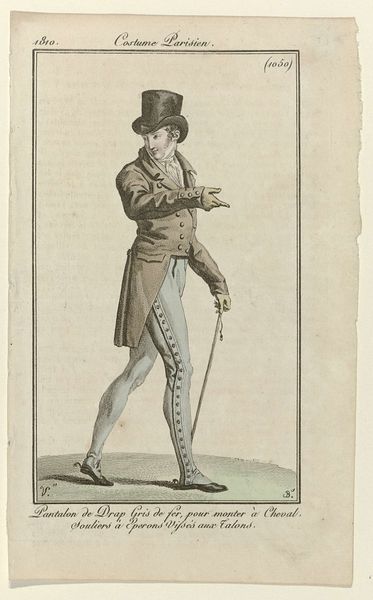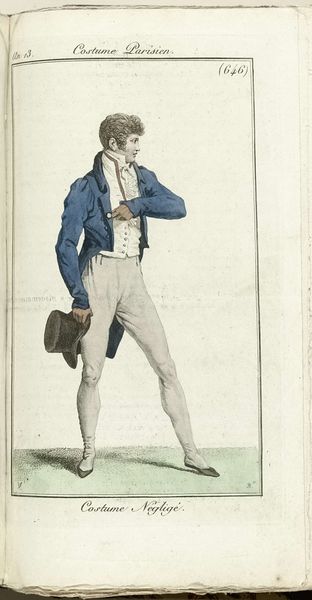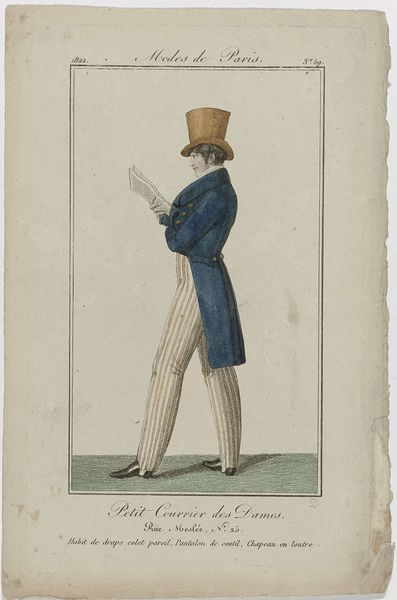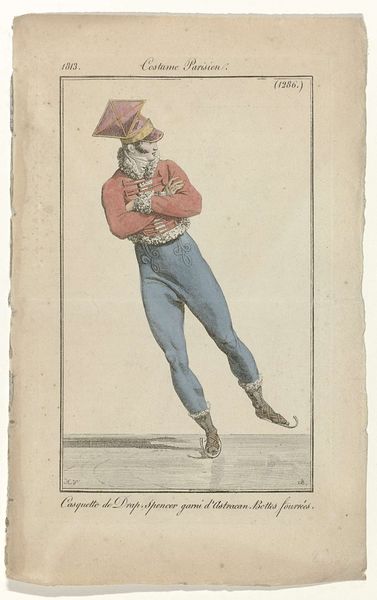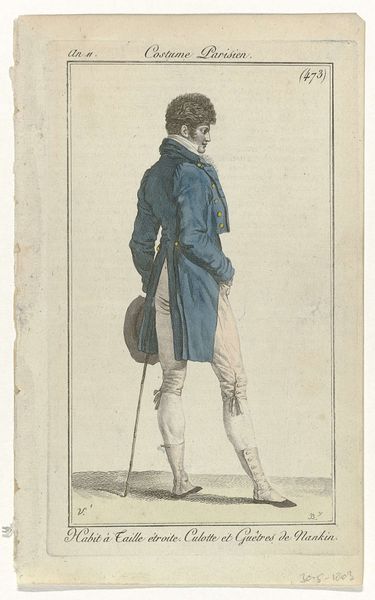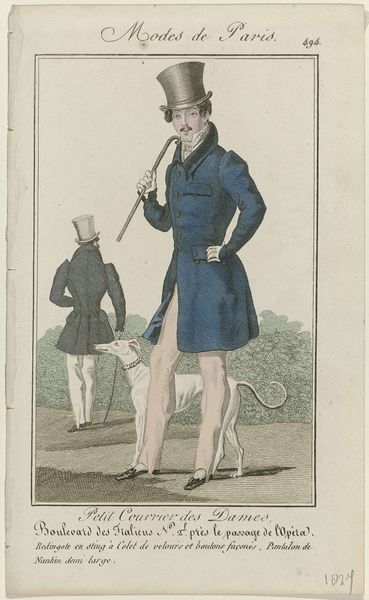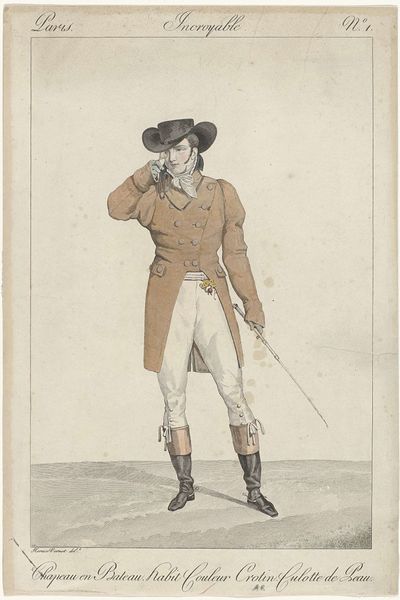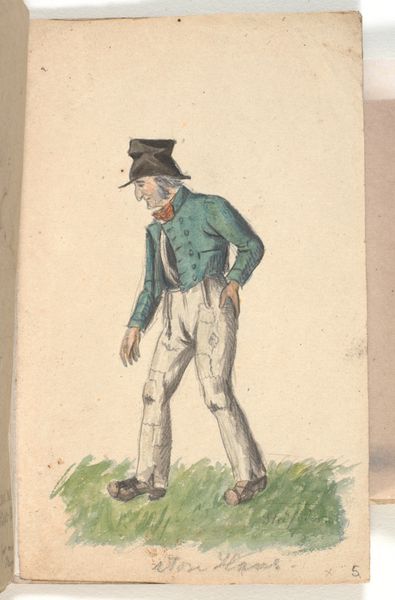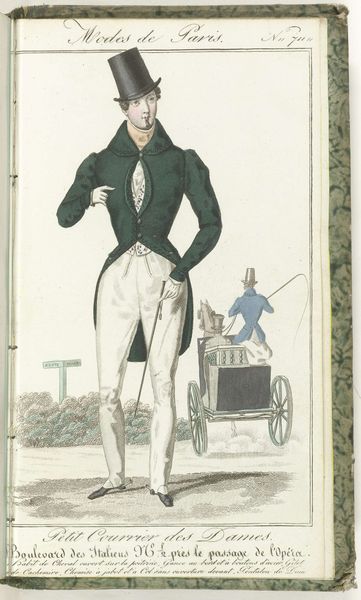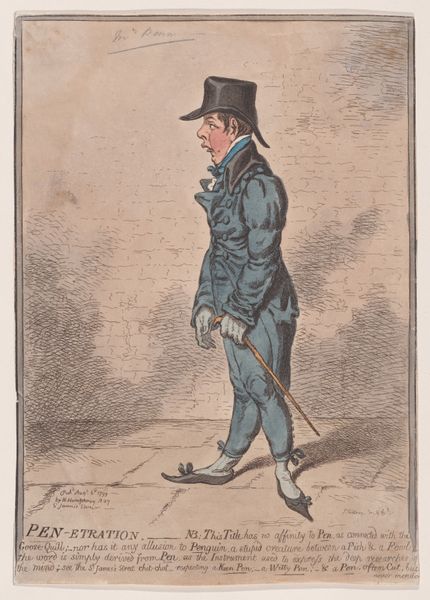
Journal des Dames et des Modes, Costume Parisien, 15 juillet 1813, (1325): Costume d'un Enfant (...) 1813
0:00
0:00
pierrecharlesbaquoy
Rijksmuseum
drawing, paper, ink
#
portrait
#
drawing
#
neoclacissism
#
paper
#
ink
#
romanticism
#
genre-painting
Dimensions: height 177 mm, width 112 mm
Copyright: Rijks Museum: Open Domain
Curator: Here we have a print titled "Journal des Dames et des Modes, Costume Parisien, 15 juillet 1813, (1325): Costume d'un Enfant...", created in 1813 by Pierre Charles Baquoy. It's currently housed in the Rijksmuseum. Editor: My first impression is one of restrained elegance. The color palette is very subdued, almost austere, and the figure seems caught in a moment of elegant, youthful seriousness. Curator: Precisely! This piece aligns with the Neoclassical and Romantic styles of the era, where both a return to classical ideals and an emphasis on emotionality were in vogue. The figure, identified as a child between 11 and 12, is adorned with the trappings of a noble pursuit—a bow and arrows. We must not ignore that Cupid often figured importantly into artistic narratives as well. Editor: Right, but let’s consider the *making* of this image. The delicate lines, the hatching and cross-hatching creating subtle shading – it suggests meticulous work, probably by an engraver translating a design for mass reproduction. This wasn't just about high art; it was about disseminating fashion and ideals. How accessible, materially, would this periodical have been, though? Was it only enjoyed by a small, elite class? Curator: Indeed, that intersection is key. The arrows and bow aren’t merely tools for hunting; they evoke classical mythology. The figure becomes an allegorical representation, a child embodying virtuous ideals of skill and composure. The Neoclassical movement always pulled threads from ancient philosophy regarding character-building activities. Editor: It does raise the question: what materials were readily available to produce the publication, including ink, paper, and the tools for engraving? Who were the laborers creating these plates? What systems of trade, patronage, and labor did that material process involve? These visuals are not just floating aesthetics – they carry economic baggage! Curator: Certainly! But it’s important to acknowledge the layering of symbolism. The choice of archery suggests more than just physical prowess; it alludes to classical myths like Diana and Apollo. A highly cultured allusion aimed toward self-fashioning among elite society, the bows, quivers, and top hats could easily have become signifiers of class distinction. Editor: So, we can unpack this image not only for its symbolism but for its material footprint, revealing who had access, who profited, and who toiled to create and circulate these ephemeral depictions. Curator: A harmonious note to end on – acknowledging how deeply intertwined those symbolic and material realms truly were back then and perhaps still are today! Editor: I think so, it offers insight into a society obsessed with fashion, status and visual narratives.
Comments
No comments
Be the first to comment and join the conversation on the ultimate creative platform.
